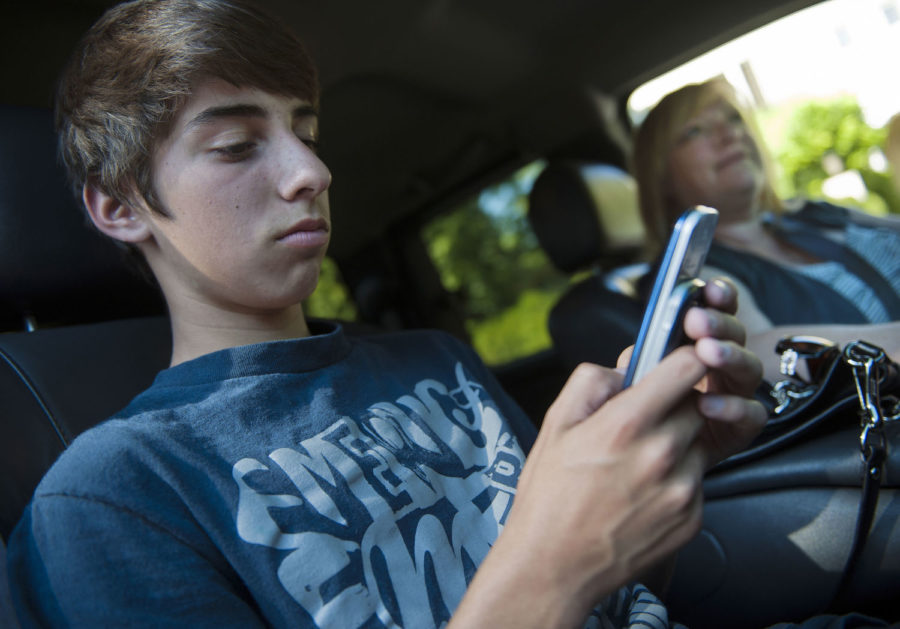Childhood, where has it gone?
Brandon Gonzales, 12, has been using a cell phone since he was 10. Almost all of his friends have cell phones, too. His mom, Elizabeth Gonzales, likes knowing that he can call home at any time. “It gives me peace of mind,” she said. Kids ages 9 to 12 are the fastest-growing cell phone market. (Renee C. Byer/Sacramento Bee/MCT)
October 26, 2015
A common saying when referring to children is, “they grow up so fast.” These days, fast is an understatement when the trend for children is to reach adulthood as fast as possible.
With three-year-olds playing on iPads, kindergarteners headed to school with smartphones in their backpacks, 16-year-old girls looking like 21-year-old women and boys lifting weights at ages where it does more harm than good just to get their desired physique, children are looking and acting a lot more like adults.
Many TV programs, movies, commercials and toys are sending children messages of what they should look, act and think like. More times than not, the messages are not age appropriate for the ages they are targeting. This trend is easiest to spot in girls. Girls are dressing less and less age appropriate. It’s much harder to tell if a girl is a minor or an adult today than it was ten years ago.
Then there are the concepts the media is exposing today’s children to, which are also too advanced. Concepts of love and relationships are brought to the minds of ones who have yet to figure out what these concepts are and what they mean to them.
The adult concepts fed to them at early ages become the templates which they use as they progress through life. Having never truly developed their own templates, life can prove to be overwhelming when what worked for “Sally” on TV isn’t working for them. Children become contortionists, trying to conform to these templates rather than forming their own concepts complementary to their own identities.
As adults, to help children make sense of the grown concepts they’re digesting is virtually impossible. For most of them, mentally and emotionally, the maturity is not there at their disposal to decipher your explanation, let alone the concept itself.
David Elkind, author of “The Hurried Child: Growing Up Too Fast, Too Soon,” is outspoken about the speed at which children are growing up.
“Our society is compressing childhood more and more to where children are not children for very long,” Elkind said. “Children are under tremendous pressure to ‘be mature’ and to ‘grow up’ when they have not had the chance to develop emotional maturity.”
Dr. Gail Gross detailed the detrimental effects of this trend in her article “Let’s Talk About the Significance of Stress on Children” on her website, drgailgross.com, a site dedicated to giving advice on relationships, family development, education and behavior.
“If children are offered the stresses of adulthood, they will also exhibit the ailments of adulthood,” Gross said. “Pediatricians are finding more children with stress related diseases, such as ulcers, by the age of 7, as well as sleep disorders and bedwetting.”
In many ways, childhood should be treated as an extension of the womb, a protected environment in which to grow children not only physically, but also mentally and emotionally.
Adulthood is the majority of a lifespan. Childhood is a sliver of that lifespan, but it’s an undeniably important sliver. At the rate we are going, our future generations may never get to savor the piece of life that matters the most.





























































































































